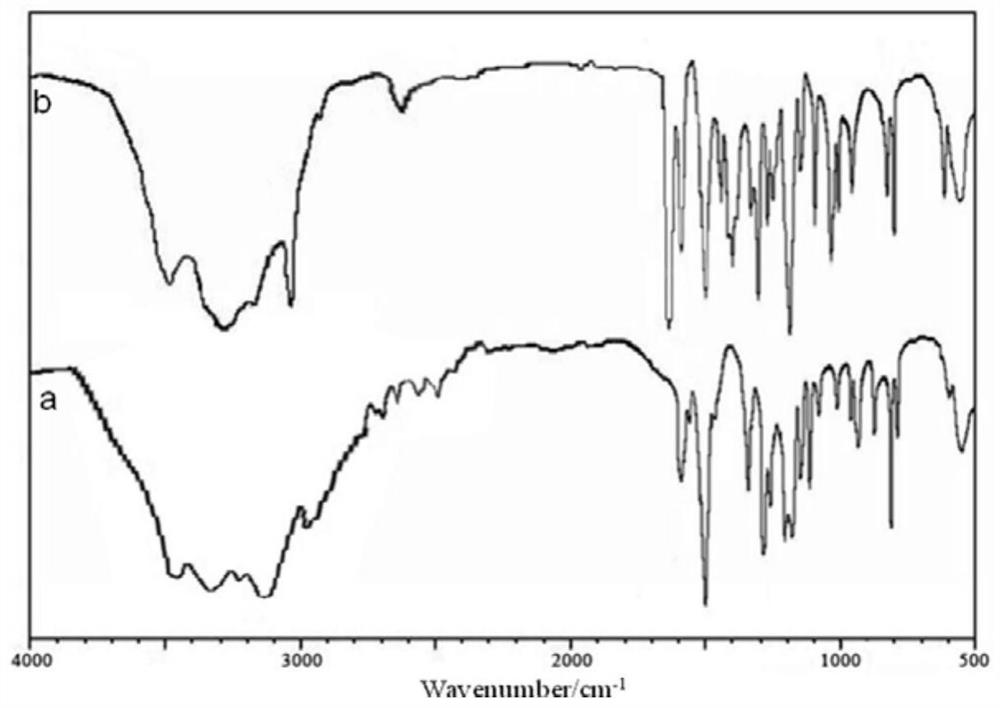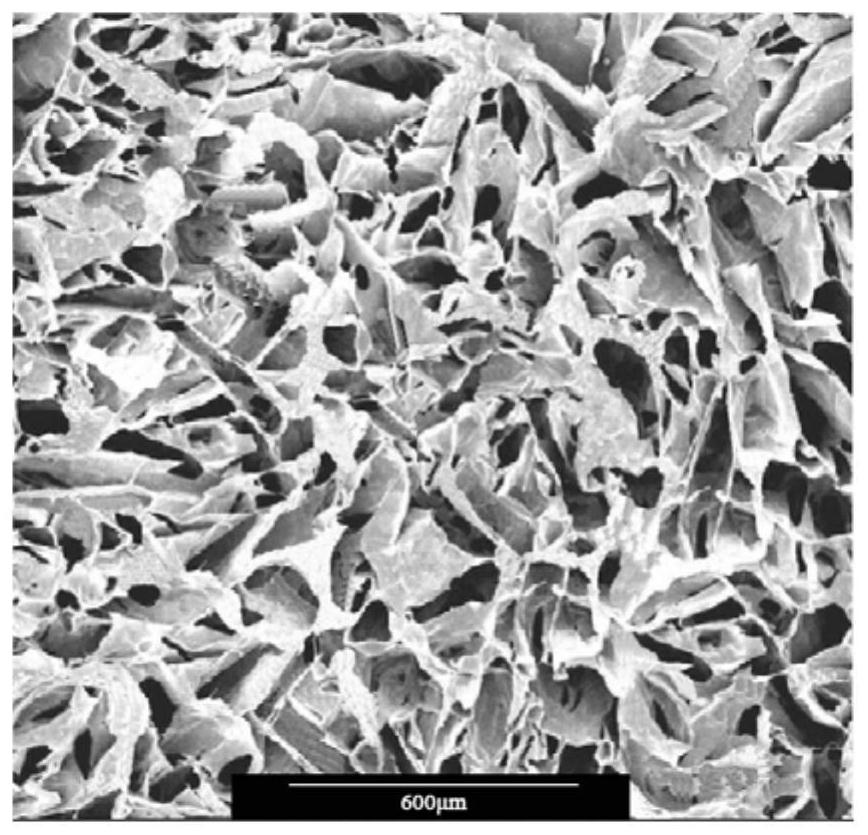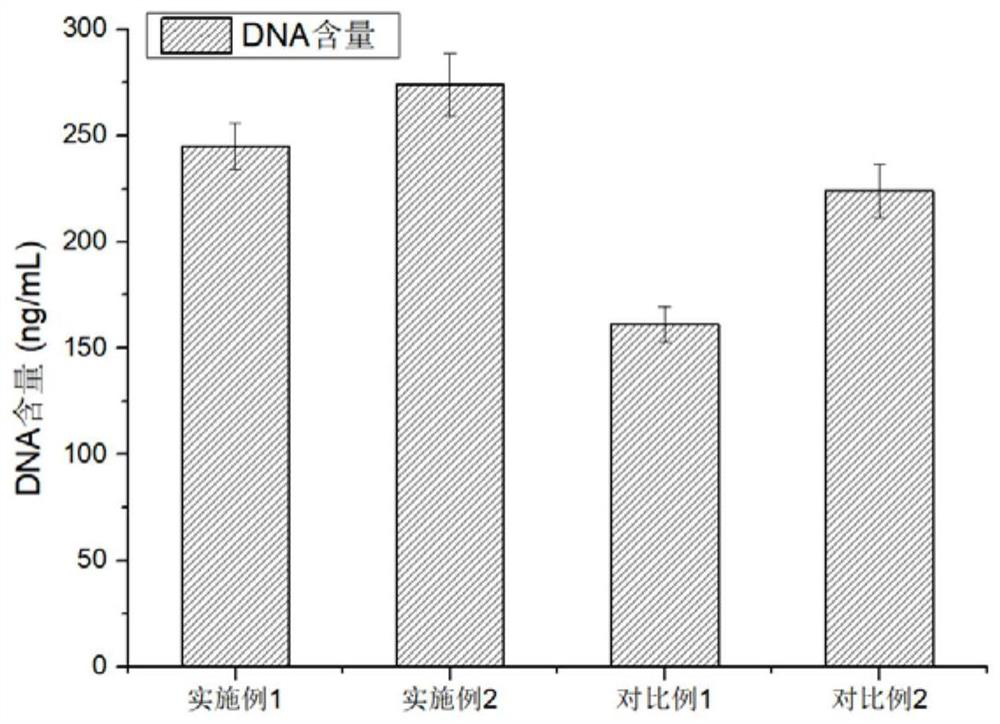Degradable composite nanofiber three-dimensional material and application thereof in tissue repair
A technology of composite nanofibers and nanofibers, applied in medical science, pharmaceutical formulations, prostheses, etc., can solve problems such as poor hydrophilicity and unfavorable cell adhesion, and achieve low dissolution rate and good biocompatibility
- Summary
- Abstract
- Description
- Claims
- Application Information
AI Technical Summary
Problems solved by technology
Method used
Image
Examples
Embodiment 1
[0034] A method for preparing a degradable composite nanofiber three-dimensional material,
[0035](1) preparation of dopamine graft: dissolving geniposidic acid in water, adjusting pH to 5.5, adding catalyst 1-ethyl-(3-dimethylaminopropyl) carbodiimide hydrochloride and N -Hydroxysuccinimide, add dopamine hydrochloride after dissolving, react at 25°C for 24 hours under nitrogen atmosphere, remove catalyst and unreacted monomers by dialysis, freeze-dry to obtain dopamine grafts; add geniposidic acid The amount is 3wt% of the aqueous solution, the addition amount of 1-ethyl-(3-dimethylaminopropyl) carbodiimide hydrochloride is 3wt% of the aqueous solution, the addition amount of N-hydroxysuccinimide is the aqueous solution 4wt% of the aqueous solution, the addition of dopamine hydrochloride is 2wt% of the aqueous solution.
[0036] (2) Preparation of silk fibroin nanofiber solution: add sodium bicarbonate to boiling water, add silk after dissolving, and stir for 20 minutes, th...
Embodiment 2
[0039] A method for preparing a degradable composite nanofiber three-dimensional material,
[0040] (1) preparation of dopamine graft: dissolving geniposidic acid in water, adjusting pH to 5.5, adding catalyst 1-ethyl-(3-dimethylaminopropyl) carbodiimide hydrochloride and N -Hydroxysuccinimide, add dopamine hydrochloride after dissolving, react at 25°C for 24 hours under nitrogen atmosphere, remove catalyst and unreacted monomers by dialysis, freeze-dry to obtain dopamine grafts; add geniposidic acid The amount is 3wt% of the aqueous solution, the addition amount of 1-ethyl-(3-dimethylaminopropyl) carbodiimide hydrochloride is 3wt% of the aqueous solution, the addition amount of N-hydroxysuccinimide is the aqueous solution 4wt% of the aqueous solution, the addition of dopamine hydrochloride is 2wt% of the aqueous solution.
[0041] (2) Preparation of silk fibroin nanofiber solution: add sodium bicarbonate to boiling water, add silk after dissolving, and stir for 20 minutes, t...
Embodiment 3
[0044] A method for preparing a degradable composite nanofiber three-dimensional material,
[0045] (1) preparation of dopamine graft: dissolving geniposidic acid in water, adjusting pH to 5.5, adding catalyst 1-ethyl-(3-dimethylaminopropyl) carbodiimide hydrochloride and N -Hydroxysuccinimide, add dopamine hydrochloride after dissolving, react at 25°C for 24 hours under nitrogen atmosphere, remove catalyst and unreacted monomers by dialysis, freeze-dry to obtain dopamine grafts; add geniposidic acid The amount is 3wt% of the aqueous solution, the addition amount of 1-ethyl-(3-dimethylaminopropyl) carbodiimide hydrochloride is 3wt% of the aqueous solution, the addition amount of N-hydroxysuccinimide is the aqueous solution 4wt% of the aqueous solution, the addition of dopamine hydrochloride is 2wt% of the aqueous solution.
[0046] (2) Preparation of silk fibroin nanofiber solution: add sodium bicarbonate to boiling water, add silk after dissolving, and stir for 20 minutes, t...
PUM
 Login to View More
Login to View More Abstract
Description
Claims
Application Information
 Login to View More
Login to View More - R&D
- Intellectual Property
- Life Sciences
- Materials
- Tech Scout
- Unparalleled Data Quality
- Higher Quality Content
- 60% Fewer Hallucinations
Browse by: Latest US Patents, China's latest patents, Technical Efficacy Thesaurus, Application Domain, Technology Topic, Popular Technical Reports.
© 2025 PatSnap. All rights reserved.Legal|Privacy policy|Modern Slavery Act Transparency Statement|Sitemap|About US| Contact US: help@patsnap.com



